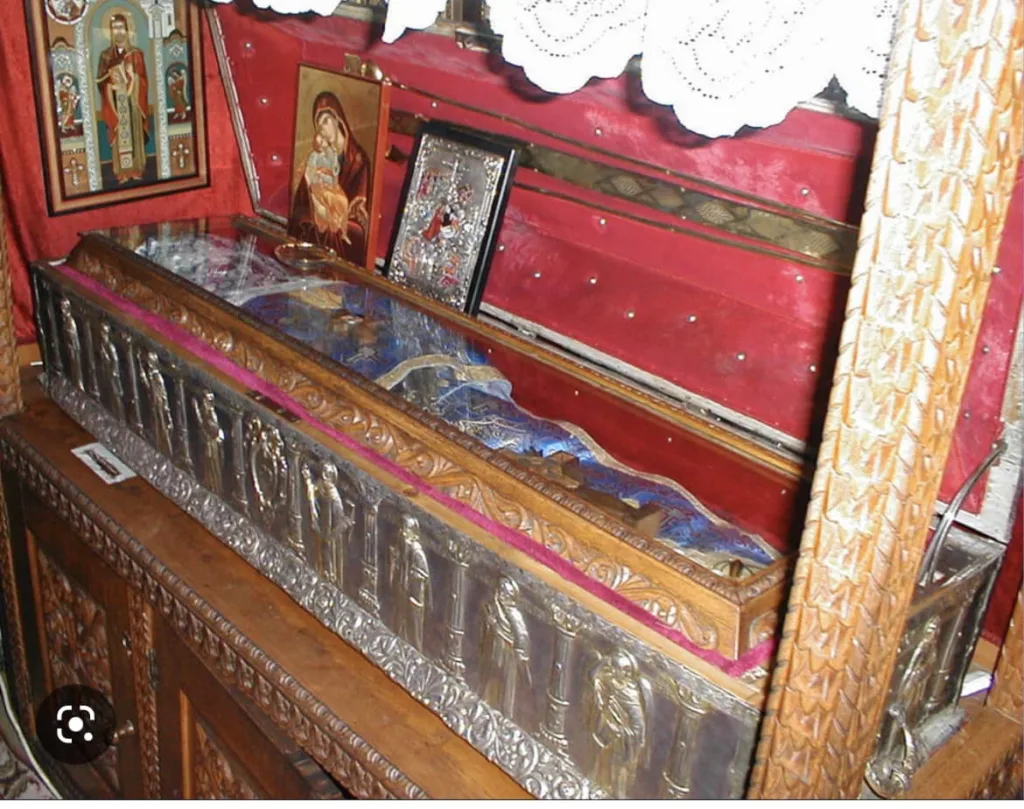The Holy and incorrupt relics of St. Gregory the Decapolit
Eastern Orthodox Phronema | Posted on |

The Holy and incorrupt entire relics of St. Gregory the Decapolit are in Romania in the monastery of Bistrita where he fulfilled many miracles until today.
After the transfer to heaven of St. Gregory the Decapolit and the fall of Byzantium into the hands of the Turks, his honored relics ended up in the hands of a Turkish ruler. The pious Romanian nobleman of the city Craiova, Barbu Craiovescu, upon learning of the existence of these relics and the countless miracles performed here, spent large sums of money and, in 1498, took the relics of St. Gregory the Decapitator to the monastery of Bistrita (Valcea), his foundation, for the consolation of all.
According to tradition, the Turk sold the holy relics for gold, putting them in the scales. But, with the prayers of the saint, his relics became easy to weigh and the Turk did not get all the money he wanted. Later, the Turk, seeing himself cheated by the Christians, went to the monastery of Bistrita to get the relics back or more money. Then, the happy founder, a monk from here named Pahomie, upon learning of the arrival of the Turk, hid the holy relics in a nearby mountain cave, where a small chapel was built in honor of St. Gregory.
This is how the holy relics escaped from the hands of the pagans. Then the Turks, angry, plundered the monastery and, setting it on fire, left for their country. The founder rebuilt the monastery and brought the holy relics from the cave, which are preserved to this day in the great church as a precious treasure. Only in times of great danger are they hidden in the cave.
Throughout the five centuries of existence of the relics of St. Gregory the Decapolite in Romania, there have been many countless miracles and cures for diseases, which have been forgotten with time. Of the few that have been written, we remember some miracles performed, especially in our days.
According to an ancient Orthodox tradition, in times of danger and great drought, processions were made through cities, villages, and fields with the relics of St. Gregory the Decapolite and miraculous icons.
The relics used to be brought out in summer, in South Wallachia of Romania and especially in Oltenia, in times of drought, and, with the prayers of the curate, the Lord sent early and late rain on the earth. The first known procession for rain with the relics of St. Gregory in Wallachia took place in the summer of 1765. The drought-stricken crops were saved and the faithful people were spared death.
In the summer of 1913, on the feast day of the monastery of Bistrita, a young girl, paralyzed in both legs, was brought to the relics of St. Gregory. Being touched by the holy relics, she was given the holy liturgy three times and, at the end of three weeks, she came to the monastery standing to thank the saint for her healing.
In 1920, a woman named Măria from the village of Cacova (Valcea) fell from a plum tree, her whole body was paralyzed and she was brought to the monastery after a few days, to St. Gregory. When the Holy Liturgy was celebrated, the sick woman opened her eyes wide, came to, and asked to be lifted to her feet. She then returned home cured, with the prayers of St. Gregory the Wonderworker. Amen
Leave a Reply